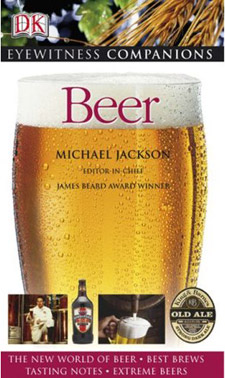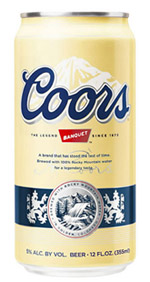 In the introduction of Beer (Eyewitness Companions)
In the introduction of Beer (Eyewitness Companions) we are reminded why there will never be another beer writer like Michael Jackson:
we are reminded why there will never be another beer writer like Michael Jackson:
“When one thirsts for a glass of wine or a pint of beer, the brain gradually registers the order as a half-heard whisper. The volume is slowly turned up, creating a gentle, purring, reverberation throughout the nervous system. It seems a pleasurable massage at first, then becoming tenacious. You are in the hands of a higher authority that brooks no argument. It is desire, and the streetcar cannot leave its lines. Your destination is a rendezvous with a drink.”
Are you still here? Or are you on your way to a bookstore, as thirsty for the rest of this book as you would be for a beer?
Because I contributed to Beer Companions it doesn’t seem appropriate to offer a “review,” but I can tell you a little about it. Shortly before the book shipped Amazon linked used copies of “Great Beer Guide” to this one. Both were published by Dorling Kindersley, which might have created some of the confusion, but they are quite different books.
it doesn’t seem appropriate to offer a “review,” but I can tell you a little about it. Shortly before the book shipped Amazon linked used copies of “Great Beer Guide” to this one. Both were published by Dorling Kindersley, which might have created some of the confusion, but they are quite different books.
Probably because the “Great Beer Guide” was itself a repackaged version of “Ultimate Beer” and because Beer Companions was published shortly after Michael’s death some beer discussion boards contributors hypothesized that this would be another one with “re-purposed” content. That is not the case.
Michael explained in the acknowledgments that rather than researching and writing the whole book himself he recruited correspondents to provide up-to-date information from the world’s great brewing nations. He acted as editor-in-chief as well as writing the front matter. Some parts — such as the introduction to beer’s ingredients, how it’s brewed, and how to enjoy it — will be familiar to those who own his other books. But much it totally new.
This book is part of another “Eyewitness” series from DK. You’ve likely seen the Eyewitness Travel books (we must own a dozen). The Companions series focuses instead on subjects such as beer, wine, cheese, olive oil and golf.
Going into the project Michael noted, “The readers as inherited from the Eyewitness Guides will tend to be well-travelled, interested in food-and-wine, well educated, earning a reasonable income, open-minded.”
He greets them with with an introduction and treatise on styles that are essential reading.
He doesn’t pull punches, writing early on that “neither European brewers nor most drinkers on either side of the Atlantic have yet grasped that tomorrow’s most exciting styles of beers will be American in conception.”
Michael once said: “I think I was the first person ever to use the phrase, ‘beer style.’ The next thing was to try to define what they were, which lots of people have done since, but I think I was the first person.”
That was, of course, in his 1977 “World Guide to Beer.” Now we get his perspective from 2007, a last chance to see the world through his eyes. One certainly worth treasuring.
******
Although the headline above describes this as his last book, I hope that turns out to be false. I’d happily read a well chosen collection of his essays and columns from the many publications he wrote for. I suspect you would as well.
 For more about what this is part of look here.
For more about what this is part of look here. And we’re off. For more about
And we’re off. For more about  A few beer related thoughts to help you shake free of any turkey-infused haze remaining after a long weekend:
A few beer related thoughts to help you shake free of any turkey-infused haze remaining after a long weekend: